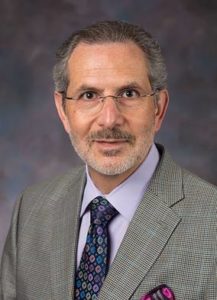The True History of the Nuremberg Code: Leo Alexander’s Blueprint Uncovered
The True History of the Nuremberg Code: Leo Alexander’s Blueprint Uncovered https://pediatricsnationwide.org/wp-content/themes/corpus/images/empty/thumbnail.jpg 150 150 Abbie Miller Abbie Miller https://pediatricsnationwide.org/wp-content/uploads/2023/05/051023BT016-Abbie-Crop.jpg- May 19, 2022
- Abbie Miller
An investigation of Duke University’s Medical Center’s Archives boxes labeled “Alexander’s Papers” reveals a document containing six principles, which were included nearly word-for-word in the Nuremberg Code.
At the end of the famous Doctors’ Trial, the trial of Nazi doctors for their crimes and treatment of people who were identified as “research participants,” Judge Sebring set forth 10 principles needed to conduct human subject research. These principles are known as the Nuremberg Code and still guide physicians and researchers today.
Authorship of the Code has long been the subject of dispute with both Andrew Ivy and Leo Alexander, doctors who testified for the prosecution during the trial, claiming authorship.
For Pedro Weisleder, MD, PhD, pediatric neurologist and director of the Center for Pediatric Bioethics at Nationwide Children’s Hospital, the history of World War II and the Nuremberg Code is personal as much as professional.

Pedro Weisleder, MD, PhD
“As one who was born to a family of Holocaust victims and survivors, the history of World War II is personal. As a physician, duty-bound to act in the best interests of my patients, the fact that Nazi doctors carried our brutal experiments on concentration and extermination camp victims is incomprehensible,” he says. “The Nuremberg Code is the platform on which all codes for the protection of human subjects research stand.”
In 2017, Dr. Weisleder had the opportunity to explore the Duke University Medical Center’s Archives and dig into a series of boxes labeled “Alexander’s Papers.” The results of this exploration have recently been published in Pediatric Neurology.
“I visited the archives hoping to learn more about the Nuremberg Trials and Leo Alexander. The boxes with Alexander’s papers were filled with photographs, letters he wrote to his wife, official papers, even invitations to formal events,” says Dr. Weisleder. “But nothing prepared me for the moment when I realized having found the blueprint of the Nuremberg Code. At the risk of sounding dramatic, I can safely say that I held history in my hands.”
This piece of history shines a light on the authorship of the Code. After thorough investigation of the Doctors’ Trial databases, previous research on the topic and the review of Alexander’s papers, Dr. Weisleder concludes in his publication:
Although the Nuremberg Code is likely to have been an unplanned collaboration among members of the prosecuting team and the judges, I present evidence suggesting that Alexander drafted the blueprint and was the main contributor to the final version of the Code.”
The importance of this code should not be underestimated. When its principles are followed, researchers, participants and humankind are able to move research forward in a way that benefits everyone.
“Human subject research is essential for the advancement of medicine. It allows us to expand our knowledge of conditions which in the past went undiagnosed,” says Dr. Weisleder. “But more importantly, it helps us identify treatments for conditions where one may not exist. Willingness to become a research subject is a gift to humankind. Those who volunteer to do so should receive every available protection.”
Reference:
Weisleder P. Leo Alexander’s Blueprint of the Nuremberg Code. Pediatric Neurology. 2022;126:120-124.
About the author
Abbie (Roth) Miller, MWC, is a passionate communicator of science. As the manager, medical and science content, at Nationwide Children’s Hospital, she shares stories about innovative research and discovery with audiences ranging from parents to preeminent researchers and leaders. Before coming to Nationwide Children’s, Abbie used her communication skills to engage audiences with a wide variety of science topics. She is a Medical Writer Certified®, credentialed by the American Medical Writers Association.
-
Abbie Millerhttps://pediatricsnationwide.org/author/abbie-miller/
-
Abbie Millerhttps://pediatricsnationwide.org/author/abbie-miller/
-
Abbie Millerhttps://pediatricsnationwide.org/author/abbie-miller/
-
Abbie Millerhttps://pediatricsnationwide.org/author/abbie-miller/
- Post Tags:
- Clinical Research
- Clinical Trials
- Research







